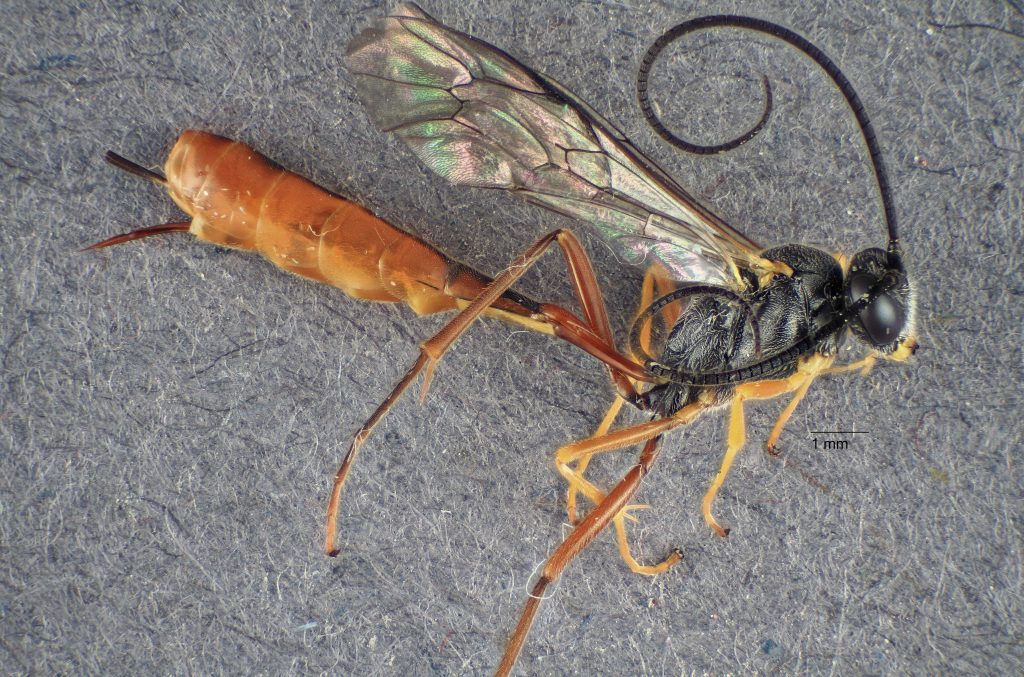Hello students at Macclesfield! I am sorry it has been so long since I was in contact. I wanted to show you some of the cool things you caught in the Malaise trap that you ran for me last last year up in the bush block, and I’ll keep you updated as I keep working on the specimens. I know some of the other schools have been getting a bit of media attention lately, they just got lucky with the sort of wasp they caught, that it could be easily identified as a new species! The ones you caught are super important too, and I am working on all of them at the same time.

You caught quite a few specimens of the wasps I study, the microgastrines, at least two or three different species. This is a species in the genus Cotesia – I have just finished some research on this group, so once we get the DNA results back it should be pretty quick to know what species you caught – or maybe it will be a new species! I’m working in the lab at the moment, so hopefully it won’t be too long before I have news about this – but it will probably be in term 3 sometime.
Microgastrine wasps lay their eggs inside caterpillars – the baby wasps hatch out and slowly eat the caterpillar alive!

You caught lots of other cool looking wasps too! The one in the photo above is from the family Ichneumonidae. These wasps are parasitoids like the microgastrines, you can see her ovipositor or egg-laying tube (the pointy thing coming out the abdomen that looks like a stinger) and the protective covers for the ovipositor (just above it, the darker less-pointy thing). Ichneumonid wasps also often attack caterpillars, but some species also attack many other sorts of insects. We’re not sure what this ichneumonid parasitises!

This little wasp is from the superfamily Chalcidoidea, I think from the family Pteromellidae. Different species of these little wasps are often parasitoids of a wide range of insects!

The wasp above is from the family Mutillidae – female wasps in this family don’t have wings, and instead wander around the ground looking for bee or wasp nests to lay their eggs in. The baby wasps then eat the bee or wasp larvae that were in the nest. Mutillids are often known as ‘velvet ants’ as they look a bit like fluffy ants! They have very painful stings – you can see her ovipositor sticking out her abdomen in the photo above, which she can use to defend herself by stinging other animals that might want to eat her.

You also found some really cool insects which were not wasps! The photo above is of an insect called a lacewing, or a neuropteran. These insects are predators, feeding off other small insects like aphids – so they can be very handy to have in the backyard if you have aphids eating your roses!

Thanks again for running the trap for me last year, the samples are now all sorted and I’m working on identifying the microgastrine wasps that you caught!

